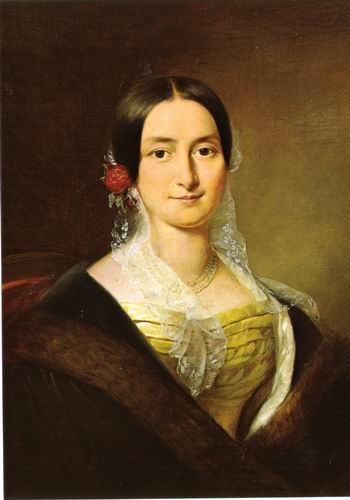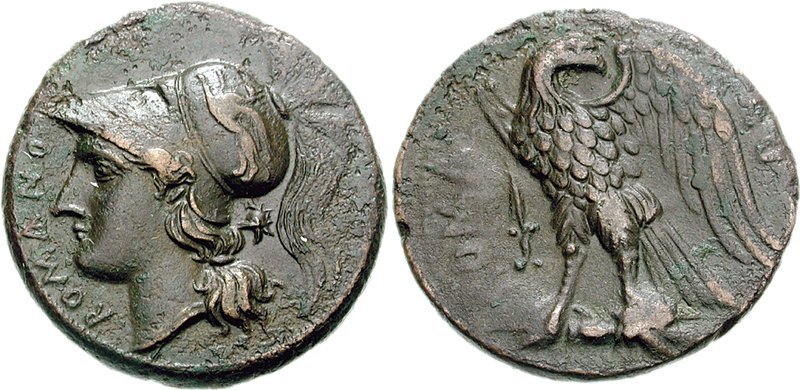|
John Of Austria (other)
{{Human name disambiguation ...
John of Austria may refer to: People * John of Austria (1547–1578), Spanish military leader, illegitimate son of Charles V, Holy Roman Emperor * John Joseph of Austria (1629–1679), Spanish general and political figure, illegitimate son of Philip IV of Spain * Archduke John of Austria (1782–1859), thirteenth child of Leopold II, Holy Roman Emperor * Vimaladharmasuriya I of Kandy (reigned 1592–1604), baptized by the Portuguese as Don João da Austria Other * ''Don John of Austria'' (opera), by Isaac Nathan (1791–1864) * John of Austria (Messina), a monument in Messina, Sicily Sicily (Italian language, Italian and ), officially the Sicilian Region (), is an island in the central Mediterranean Sea, south of the Italian Peninsula in continental Europe and is one of the 20 regions of Italy, regions of Italy. With 4. ... [...More Info...] [...Related Items...] OR: [Wikipedia] [Google] [Baidu] |
John Of Austria
John of Austria (, ; 24 February 1547 – 1 October 1578) was the illegitimate son of Charles V, Holy Roman Emperor. Charles V recognized him in a codicil to his will. John became a military leader in the service of his half-brother, King Philip II of Spain, Charles V's heir, and was addressed to as a Don. He is best known for his role as the admiral of the Holy League fleet at the Battle of Lepanto and as Governor of the Spanish Netherlands. Life Early years John of Austria was born in Regensburg, Upper Palatinate. His mother was Barbara Blomberg, the daughter of a burgher, and his father was Charles V, Holy Roman Emperor, who had been widowed since 1539. In the summer of 1554, he was taken to the castle of Luis de Quijada in Villagarcía de Campos, Valladolid. Magdalena de Ulloa, de Quijada's wife, took charge of his education, assisted by Latin teacher Guillén Prieto, chaplain García de Morales, and Juan Galarza, a squire. Charles V wrote a codicil, dated 6 June ... [...More Info...] [...Related Items...] OR: [Wikipedia] [Google] [Baidu] |
John Joseph Of Austria
John Joseph of Austria or John of Austria (the Younger) (; 7 April 1629 – 17 September 1679) was a Spanish general and political figure. He was the only illegitimate son of Philip IV of Spain to be acknowledged by the King and trained for military command and political administration. Don John advanced the causes of the Spanish Crown militarily and diplomatically in Naples, Sicily, Catalonia, the Netherlands, Portugal, Dunkirk, and other fronts. He was the governor of the Spanish Netherlands from 1656 to 1659. He remained a popular hero even as the fortunes of Imperial Spain began to decline. His feuds with his father's widow, Queen Mariana of Austria, led to a 1677 palace coup through which he exiled Mariana and took control of the monarchy of his half-brother Charles II of Spain. However, he proved far from the saviour Spain had hoped he would be. He remained in power until his death in 1679. Early life His mother was María "La Calderona" Calderón, a popular actre ... [...More Info...] [...Related Items...] OR: [Wikipedia] [Google] [Baidu] |
Archduke John Of Austria
Archduke John of Austria (, ; (or simply ''Nadvojvoda Janez''); 20 January 1782 – 11 May 1859), a member of the House of Habsburg-Lorraine, was an Austrian field marshal and imperial regent (''Reichsverweser'') of the short-lived German Empire during the Revolutions of 1848. Biography John was born in Florence, the thirteenth child of the Habsburg Grand Duke Leopold I of Tuscany (Archduke of Austria and later Emperor) and Maria Louisa of Spain. He was baptized with the name of John Baptist Joseph Fabian Sebastian, after the patron saint of the Tuscan capital. In 1790, Leopold succeeded his brother Joseph II as the Holy Roman Emperor and his family moved from the Grand Duchy of Tuscany to the Imperial court in Vienna. Only two years later, John's elder brother Francis II ascended the Imperial throne. John's native language was Italian, though he learned to speak French and German fluently. Educated by the Swiss historian Johannes von Müller, he developed wide-rangi ... [...More Info...] [...Related Items...] OR: [Wikipedia] [Google] [Baidu] |
Vimaladharmasuriya I Of Kandy
Wimaladharmasūriya I was a king of Kandy from 1592 to 1604. His reputation was built when he successfully repulsed two major Portuguese offensives on Kandy, the Battle of Danture in 1594 and the Battle of Balana in 1602, in both of which the Portuguese were humiliatingly defeated. Origin Name Wimaladharmasuriya I is referred to by four names by different sources. Rajavaliya mentions his early name as Konappu Bandara and says he is the son of a Kandyan chieftain, Weerasundara Bandara of Peradeniya. Reports of early Dutch visitors Sebald de Veert and Joris van Spilbergen mention him as Don João da Austria. Joao Rebeiro mentions one Don Juan Appuhamy, a commoner who was sent to conquer the kingdom of Kandy and of Konnapu Bandara. Historians have also noted that from 1604 to 1617 there is little information available as to what happened in the Kandyan Kingdom. Therefore, there is the possibility of mixing up of several personalities by later historians in reconstructing the hist ... [...More Info...] [...Related Items...] OR: [Wikipedia] [Google] [Baidu] |
Don John Of Austria (opera)
''Don John of Austria'' is a ballad opera in three acts by Isaac Nathan to a libretto by Jacob Levi Montefiore. It is the first opera to be written, composed and produced in Australia. Quote from the opera's title page: :The plot is taken and many scenes are literal translations from Casimir Delavigne's celebrated comedy of "Don John of Austria" (Don Juan d'Autriche). Performance history It premiered on 3 May 1847 at the Royal Victoria Theatre, Sydney and enjoyed a successful run of six performances. It has been produced only twice since: two performances (12 and 14 September 1997) at Spitalfields, London, by Spitalfields Market Opera with The Chelsea Opera Group directed by Philip Parr and conducted by Alexander Briger, and semi-staged performances on 18 and 20 October 2007in two actsat the City Recital Hall, Angel Place, Sydney, also conducted by Briger. Nathan's original orchestration has been lost and Nathan's great-great-great grandson, the conductor Sir Charles Ma ... [...More Info...] [...Related Items...] OR: [Wikipedia] [Google] [Baidu] |
Isaac Nathan
Isaac Nathan (179215 January 1864) was an English composer, musicologist, journalist and self-publicist, who has been called the "father of Australian music", having assisted the careers of numerous colonial musicians during his twenty year residence in Australia. He is best known for the success of his ''Hebrew Melodies'' (1815–1840) in London. However, he made significant contributions as a singing teacher and music historian during his time at St James's Palace and as a composer of opera in the Royal Theatres (1823–1833). After emigrating to Australia in 1840, Nathan wrote Australia's first operas and Australia's first contemporary song cycle which entangled fragments of Aboriginal songlines with European musical traditions. Nathan tailored compositions to the unique individual singing needs of his students and community choirs while using the Neapolitan bel canto pedagogical tradition that he inherited in London. Nathan's best student was Dame Marie Carandini.Crowden, Da ... [...More Info...] [...Related Items...] OR: [Wikipedia] [Google] [Baidu] |
John Of Austria (Messina)
John of Austria or Don Giovanni d'Austria is a monumental sculpture in bronze, originally gilded, of John of Austria by architect and sculptor Andrea Calamech, a native of Carrara who trained in the Florentine workshop of Bartolomeo Ammannati. Its erection was decided by the Senate of Messina in 1571 to honor the victor of the Battle of Lepanto, from which many Messineses had benefited, and it was dedicated in 1572. William Stirling-Maxwell called it "one of the most effective monuments of sixteenth-century art". On the sides of the pedestal are bronze plaques depicting the fleet, the battle, and the fleet's victorious return to Messina as well as an inscription. John is figured holding a three-pronged baton in reference to his command of the triple alliance of Philip II, the Pope, and the Republic of Venice, with his foot on the severed head of a vanquished Turk generally considered to be Müezzinzade Ali Pasha. The monument was initially located between Messina's Royal Palac ... [...More Info...] [...Related Items...] OR: [Wikipedia] [Google] [Baidu] |
Messina
Messina ( , ; ; ; ) is a harbour city and the capital city, capital of the Italian Metropolitan City of Messina. It is the third largest city on the island of Sicily, and the 13th largest city in Italy, with a population of 216,918 inhabitants in the city proper and about 595,948 in the metropolitan city as of 2025. It is located near the northeast corner of Sicily, at the Strait of Messina and it is an important access terminal to Calabria region, Villa San Giovanni, Reggio Calabria on the mainland. Founded by the Sicels with the name of ''Zancle'' in 757 BC, which in Siculian, their language meant sickle, it was repopulated by Greek colonisation, Greek colonists of Magna Graecia and renamed ''Messana''. The city was renamed ''Messina'' in the Byzantine Empire, Byzantine age. It was an important Roman Empire, Roman, and then Byzantine Empire, Greek-Byzantine city, but in 843 it was completely destroyed by the Arabs. Almost abandoned during the Islamic period, it rose again i ... [...More Info...] [...Related Items...] OR: [Wikipedia] [Google] [Baidu] |



